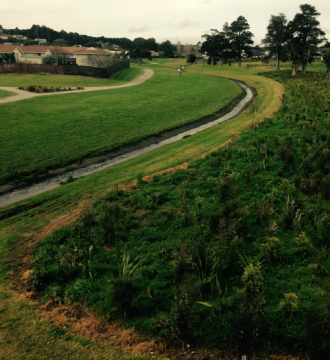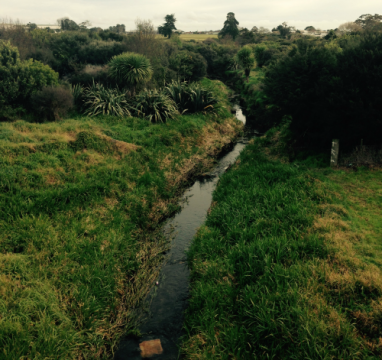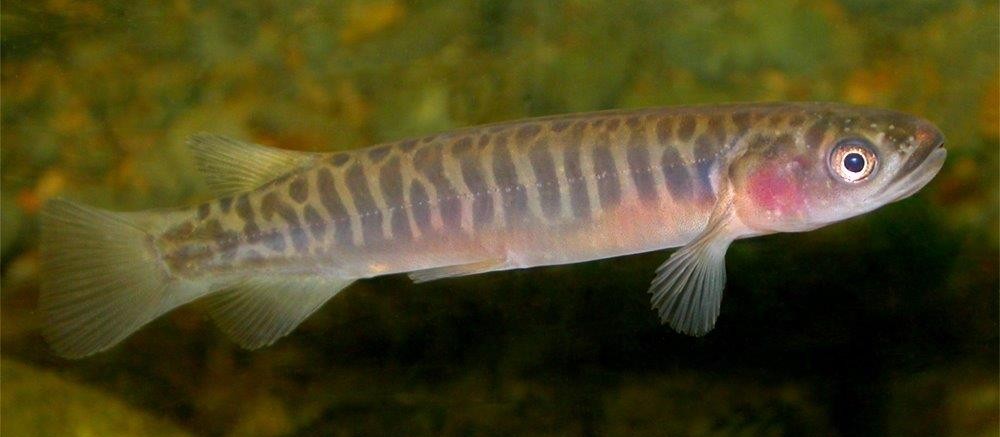Protecting Puhinui Stream

An upstream section of the Puhinui Stream, highlighting what we used to do to our streams This concreting, where there is no variation in flow and depth, is devoid of habitat features for fish and channels the flow so the velocity of the water is so strong that it’s very hard for fish to travel upstream.
When the South Auckland branch of Forest and Bird heard that local developers were planning to pipe over 4kms of Puhinui Stream tributaries for a commercial development, they knew something needed to be done.
The Puhinui Stream is home to many native fish including banded kokopu and crans bully, as well as long and short-finned eel. All need the varied waterflows and depths of the upper catchment of the stream to feed and flourish.
Making the stream run through concrete pipes would have had a catastrophic effect on this fragile ecosystem.
According to Kate Loman-Smith, Deputy Chair of South Auckland Forest and Bird branch, “I’m sure nobody intentionally wants to put native fish at risk when they undertake a development, but for many years piping streams has been an easy fix for engineers. In the past streams have often been seen for one function only in an urban setting – to get stormwater away”.
To stop the piping of the Puhinui Stream, the South Auckland branch worked with Forest and Bird’s legal team to write a submission against the proposed plan change and highlighting that “destroying nearly 4.5 km of stream cannot be ‘made up for’ elsewhere; compensation is not the answer, but preservation and restoration is.”

A section lower down the Puhinui Stream shows where there has been riparian planting.
In May 2015 an update on the submission was received by the branch confirming that the process was on hold until a structural plan was approved.
Kate Loman-Smith is positive about the result and changing attitudes to streams.
“There is now a much greater understanding of how to maintain healthy waterways and an appreciation for streams as a natural environmental asset that can convey stormwater without needing to be concreted over,” says Kate.
“Keeping streams open also has many other benefits. Riparian planting provides a natural way to hold back silt and groundwater, keep water cool (through shady plants), stop banks from eroding and creates habitats for native fish and insects.
“Our hope is that the Puhinui Gateway developers will now assess their whole stream strategy and that in the end they will adopt healthy water principles and a low impact urban design model.”
Nick Beveridge, Forest and Bird Regional Conservation and Volunteer Manager says the lesson here is that if you use your voice, you will be heard and really can make a difference.
“Auckland Council is increasingly asking for people and the community to be conservation watchdogs. They need us to be their eyes and ears on the ground and through submissions we can do this.

A banded kokopu (Photo by Stephen Moore)
“We also hope the Auckland Unitary Plan will strengthen regulations and stop developers getting away with past practices that have damaged our waterways.
Congratulations, South Auckland branch. Thanks to your quick actions, assisted by the society’s legal team, we hope a natural ecosystem can continue to be a living, breathing asset to the environment – and hopefully a good news story to inspire many others to be a voice for nature.
